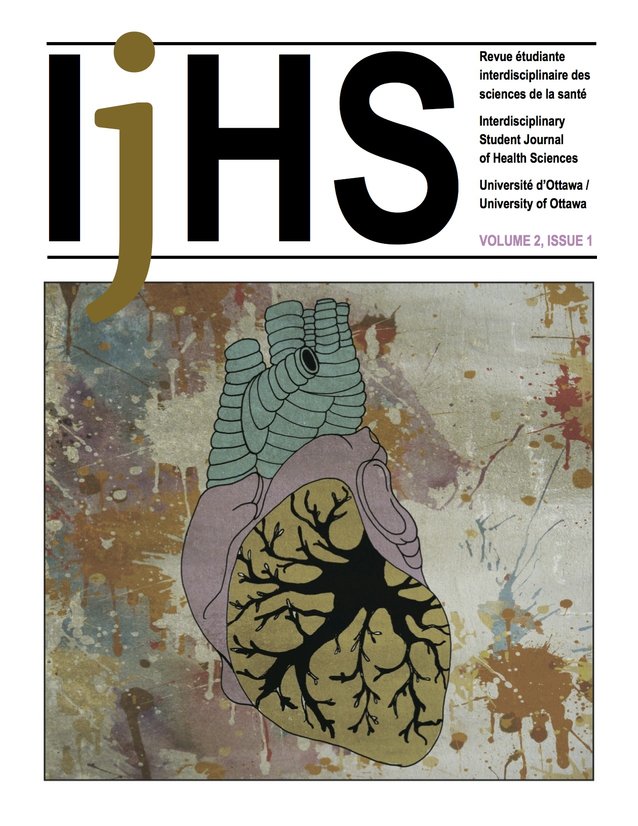Angioplasty Used to Treat Multiple Sclerosis Patients: A Potential Revolution in Health Care Technology
DOI:
https://doi.org/10.18192/riss-ijhs.v2i1.1522Keywords:
Multiple Sclerosis (MS), angioplasty, chronic cerebrospinal venous insufficiency, iron, sclerosis, neurodegenerationAbstract
Multiple sclerosis (MS) has long been labeled as a neurological disease with a high incidence among Canadians, women in particular. The disease first manifests itself in young adulthood (between the ages of 15 and 40 years). Areas of demyelination with a proliferation of astrocytes are found scattered in the white matter of MS patients, this leads to muscle weakness, numbness, disequilibrium, sphincter disturbance and other neurological dysfunctions. Recently Dr. Paolo Zamboni, a vascular surgeon at the University of Ferrara in Italy, found that many multiple sclerosis patients have a narrowing of some of the neck veins responsible for draining blood from the brain. According to Dr. Zamboni, this narrowing of the blood vessels leads to the deposit of iron in the defected veins, which restricts blood flow and is responsible for some of the MS complications. Dr. Zamboni achieved unblocking of the veins through angioplasty, a procedure normally used to open arteries affected by atherosclerosis. In one of his trials, 65 patients were given the procedure, which decreased the rate of occurrence of lesions, from 50% to 12% in patients. There was an improvement in mental and physical quality of life in most of the patients in this trial. Ethical questions are also discussed in this review. Dr. Zamboni`s studies suggest a genetic inheritance of factors that may lead to MS. Should health care providers institute a screening procedure in newborns? Would these screenings be mandatory? Would the screenings be free?
References
Dr. Jutai. HSS 3332, Technology and Health Care. Lecture “Assistive Devices”, February 2nd, 2010.
Dr. Jutai. HSS 3332, Technology and Health Care. Lecture “Corporate Health and Regulation”, February 23rd, 2010.
Dr. Jutai. HSS 3332, Technology and Health Care. Lecture “Key Concepts and Issues”, January 8th of 2010.
Tierney, L. M., McPhee, S. J., & Papadakis, M. A. (2001). Current Medical Diagnosis and Treatment. (40th ed.) Montreal: Lange.
MS Society of Canada. “About MS” Retrieved March 2nd, 2010, from http://www.mssociety.ca/en/information/ default.htm
National Heart Lung and Blood Institute. “What Are the Risks of Coronary Angioplasty?” Retrieved on April 11th, 2011, from http://www.nhlbi.nih.gov/health/dci/Diseases/ Angioplasty/
Singh, A. V., & Zamboni, P. (2009). Anomalous venous blood flow and iron deposition in multiple sclerosis. Journal of cerebral blood flow and metabolism, 29(12), 1867- 78. doi: 10.1038/jcbfm.2009.180
Zamboni, P., Galeotti, R., Menegatti, E., Malagoni, A. M., Gianesini, S., Bartolomei, I.,... Salvi, F. (2009). A prospective open-label study of endovascular treatment of chronic cerebrospinal venous insufficiency. Journal of vascular surgery, 50(6), 1348-58. doi: 10.1016/j.jvs.2009.07.096
Downloads
Published
Issue
Section
License
- All authors published in the IJHS will retain copyright of their article.
- Authors grant the IJHS the right of first publication of their submitted articles.
- All articles published in the IJHS are licensed under a Creative Commons Attribution License that allows others to share articles if original authors and journal of initial publication are acknowledged.
- The IJHS is published online and in print, therefore the journal is not responsible for any unauthorized misuse of published content in either electronic or print form
- The IJHS retains the serial distribution rights to all contents
- It is the responsibility of the authors and not the IJHS to ensure proper permissions for all cited work have been obtained


